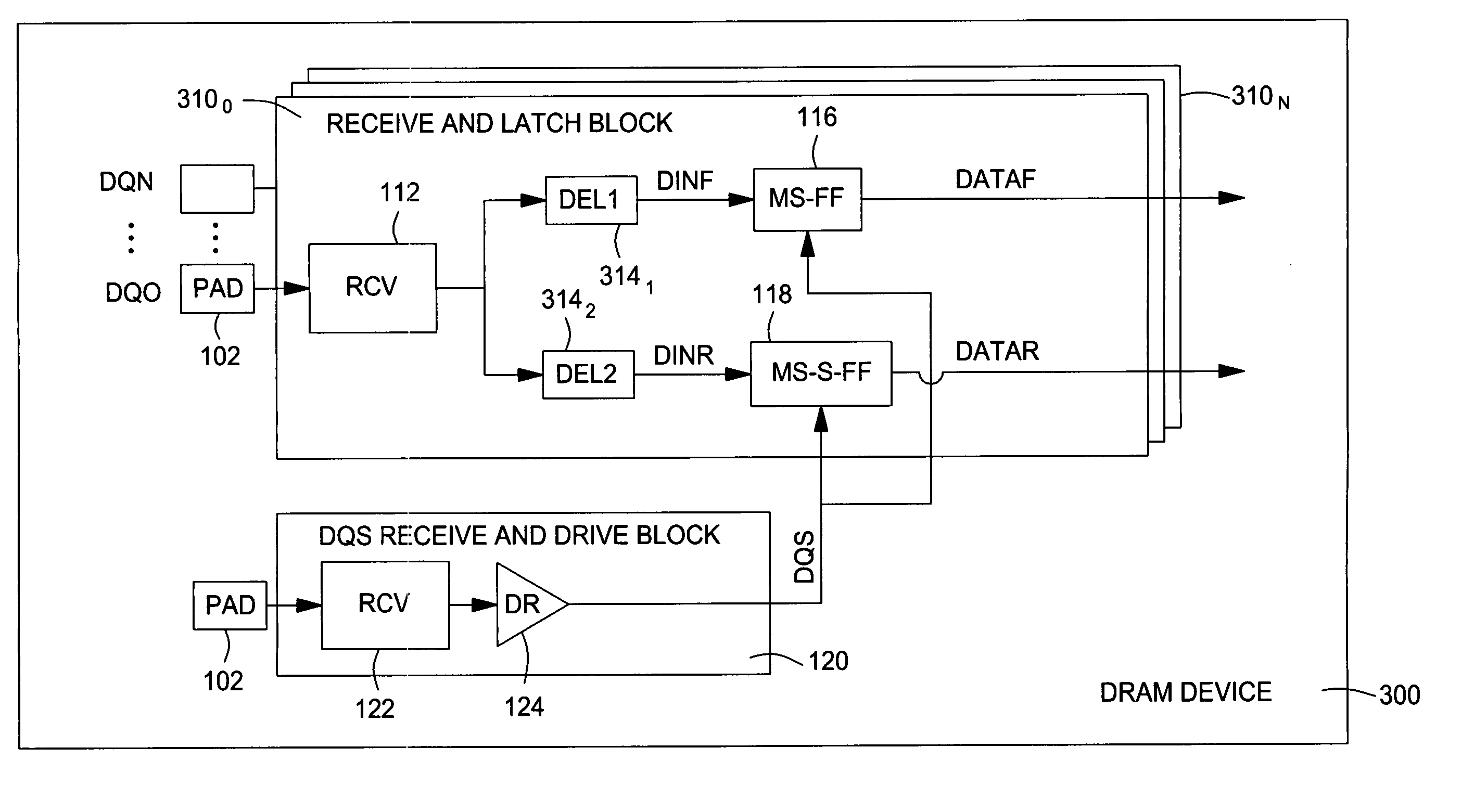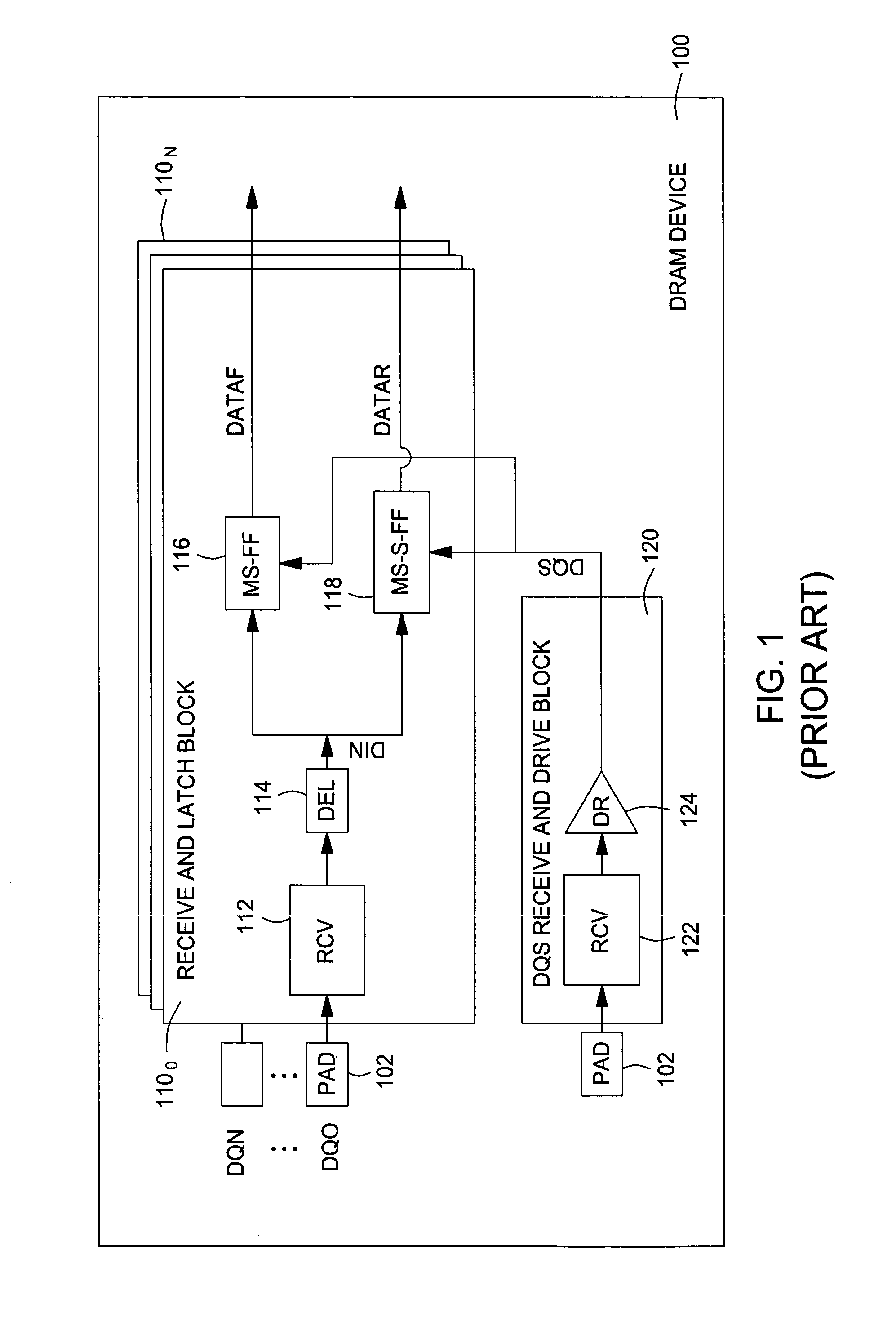Method of increasing data setup and hold margin in case of non-symmetrical PVT
a data setup and data margin technology, applied in the field of memory devices, can solve the problems of data setup and hold time, dqs signal delay, rc delay of routing wires, transition delay of driver blocks b, etc., and achieve the effect of reducing duty cycle distortion in dram devices
- Summary
- Abstract
- Description
- Claims
- Application Information
AI Technical Summary
Benefits of technology
Problems solved by technology
Method used
Image
Examples
Embodiment Construction
[0028] Embodiments of the invention generally provide techniques and apparatus to reduce duty cycle distortion in DRAM devices, for example, caused by process variations. By dividing the undelayed output signal from the data receivers into two separate paths and providing independently adjustable delay blocks in each path leading to the rising and falling edge data latches, the setup and hold timing margins may be increased.
[0029] Embodiments of the present invention are described below with reference to double data rate (DDR) DRAM devices in which two bits of data are exchanged on each data pad in each clock cycle (i.e., on rising and falling edges). Those skilled in the art will appreciate, however, that the concepts described herein may be applied to virtually any device where data is transferred synchronously (e.g., on both edges of a clock). For example, the concepts described herein may also be applied to advantage to adjust timing margins in devices in which more than two bi...
PUM
 Login to View More
Login to View More Abstract
Description
Claims
Application Information
 Login to View More
Login to View More - R&D
- Intellectual Property
- Life Sciences
- Materials
- Tech Scout
- Unparalleled Data Quality
- Higher Quality Content
- 60% Fewer Hallucinations
Browse by: Latest US Patents, China's latest patents, Technical Efficacy Thesaurus, Application Domain, Technology Topic, Popular Technical Reports.
© 2025 PatSnap. All rights reserved.Legal|Privacy policy|Modern Slavery Act Transparency Statement|Sitemap|About US| Contact US: help@patsnap.com



